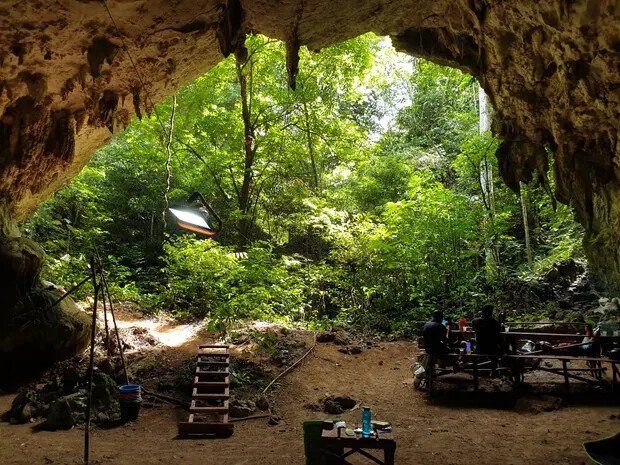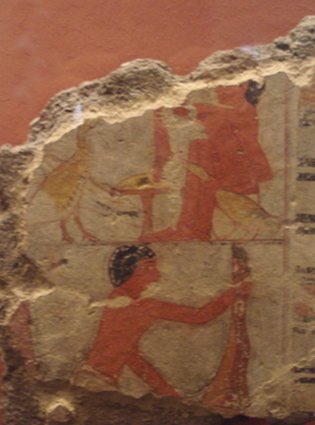They have been found where the earth meets the sky, high up on the moorlands of northern England, a mysterious series of strange and ancient carvings hewn into the rocks and boulders.
More than 100 elaborate carvings dating back thousands of years have been discovered on rocks and boulders in the North of England.
The art, thought to be the work of Neolithic man, is open to the air but is so remote that it had lain undisturbed and undetected for thousands of years - until it was recently discovered by English Heritage.
It includes a series of intricate designs of concentric circles, interlocking rings and hollowed cups.
They are among only 2,500 examples which exist in England - having survived natural erosion, quarrying and field clearance.
Around 100 volunteers, trained by English Heritage, have been recording the location, content, context and condition of rock art for the last four years as part of pilot project.
During the Neolithic period, 4,000 to 6,000 years ago, man moved away from the roaming existence of the hunter-gatherer who traversed the country, following his prey, to a more settled existence.
New Stone Age man preferred to stay put, tending cereals and domestic animals. How all of this fitted in with the abstract curves of their rock carvings is anyone's guess.
It's not possible to date the art itself, but its age can be assessed by the context in which it is found. For example, if it is near burial sites which took the form of large cairns or long mounds in which people are buried in groups, it is more likely to date back to the New Stone Age.
The most interesting discovery includes a large carved panel found on a sandstone boulder on Barningham Moor, a 300m-high (984ft) area of Co Durham, on the edge of the Pennines.
It features abstract carvings — interlocking grooves and hollowed cups with surrounding circles. Tools of stone or bone were used to carve the symbols and the work is so well preserved that the 'peck' marks are still visible.
Kate Wilson, inspector of ancient monuments at English Heritage, said: 'There are many theories as to what rock art carvings mean. They may have played a role in fire, feastings and offering activities, or been used as signposts, or to mark territory.
'They may have a spiritual significance. In hunter-gatherer communities those places where mountains touch the sky or the sea reaches the shore are often considered the domain of supernatural ancestors. Most rock art is found in those areas.'
She said that the Neolithic Age saw the arrival of 'a fairly sophisticated culture', with the introduction of agriculture. 'They were settling and cultivating something,' she added.
'You find monuments such as stone circles and henges. Something's going on where society's changing. This is a story yet to be told.'
The results of the four year initiative - funded by English Heritage, in partnership with Northumberland and Durham County Councils - will now be published online.
Richard Stroud, a volunteer who discovered the Barningham boulder, said: 'We expected to discover one or two simple carvings. Instead we found a breathtaking panel, probably one of the most complex discovered in County Durham.'
He added: 'There is a gulf of time and civilisation between the society that carved this stone and ours, its true meaning is something we will possibly never understand.'
Edward Impey, director of research and standards at English Heritage, said: 'The online record of the Northumberland and Durham examples will serve as the starting point for a national survey, and, we hope, help us understand their meaning and lead to the discovery of others.'
Logging of 'rock art' was led for decades by retired Hexham headmaster Stan Beckensall, who went on to donate his archive to Newcastle University.
His finds over the last 50 years have now been added to the online database of 1,500 carvings.
English Heritage is now hoping the pioneering work undertaken will be continued in other counties to create a nationwide record.
Sara Rushton, Northumberland county archaeologist and manager of the project, said: 'Our volunteer recorders have worked alongside experts in the field to develop new techniques and produce stunning three-dimensional computer models of rock art for display.
'These models can be manipulated to show some carvings which are now almost completely invisible to the naked eye and will be a fantastic tool for managing these ancient sites for the future.'
Made with simple tools of stone or bone, some of the patterns are as plain as a hollowed cup shape. Others feature abstract designs painstakingly carved into the local sandstone.
But despite their meticulous notes, there is only so much we will ever know about the men who laboured to leave such an indelible mark on the landscape. And perhaps that is all part of their magic.


































